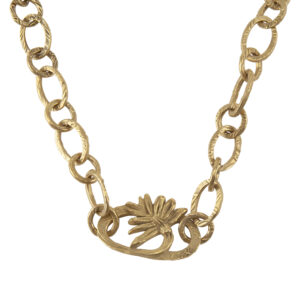…Following PMC’s Exit from the Market
PMC, Mitsubishi’s metal clay brand, rocked the metal clay community with its exit from the market. As the first metal clay, PMC made such a name for itself, many referred to all metal clay as “Precious Metal Clay” or “PMC” not realizing it was a specific brand. Its exit has left many creators reeling from the loss of their favorite tool. There were even circulating rumors that metal clay would cease to exist following PMC’s halt in production; and while it may feel like that for those who are mourning the loss of their favorite clays, there are many other clays available and many manufacturers who are working hard to provide makers with the tools they need to support their creative practice.
I’m writing this blog with hopes of providing those who are trying to find a new favorite clay some insight into the clays that Cool Tools is manufacturing, as I’ve worked extensively with every one of the Cool Tools brand clays, and I believe clay is like any other tool, and to have the most success, the tool should be picked according to the job. While it is my hope that providing you with my opinions gathered from my experience with these clays will ease your transition into working with them, I also realize that everyone has different preferences, and my least favorite clay may be someone else’s most favorite. I hope that by presenting both the qualities that I appreciate, and struggle with, you will be able to anticipate what clay will most naturally blend into your making practice.
EZ960 Sterling Silver Clay
If you’re looking for substantial strength post fire, the enriched sterling EZ960 would meet that expectation. I’ve made many rings using this clay over the years, and they are holding up beautifully. This clay requires a kiln to be sintered, and when fired to its maximum sinter at 1675°F for 2 hours, it’s very strong. In lump form, this clay is malleable and soft, with a moderate working time allowing for plenty of time for sculpting. It joins very readily, and just water can be used when making light connections – with paste or syringe being helpful at weight bearing or larger connections. When dried, especially if dried with heat in a dehydrator, this clay is incredibly flexible in the greenware state, allowing for creators to use it to fabricate and build in the greenware phase creating complex and precise pieces. The opposite side of this coin is that because it is soft and flexible in the greenware phase, thin pieces need to be well supported while they are sanded to ensure they are not manipulated during the sanding process and to prevent breaking. EZ960, when refined in the greenware phase with sanding pads, is easy to polish to a high shine with just a flash shiner or by being placed in a tumbler.
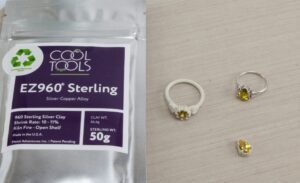
FS999 Fine Silver Clay
FS999 is the softest clay of the Cool Tools family; it is exceedingly malleable and has a dough-like feel in its lump form. It has an incredibly long working time, and I choose it for pieces where I will be doing lots of sculpting like creating hand sculpted flowers or a piece composed of lots of small, sculpted elements. It’s great for coiling and even coils allow for manipulation a good time after being formed. It’s composed of slightly larger silver particles, so it cannot be sintered with a torch, and can have a grain-like feel during the refining process. Sanding with some compression and even burnishing in the greenware phase can help this clay have more of a shine post fire. Tumbling and the burnishing effect of the tumbler is also helpful for bringing up a shine on this clay post fire. It is fine silver, so it is softer and not as strong as EZ960 when sintered and does not feel as sturdy when fired as its fine silver sibling Phoenix.

Phoenix Fine Silver Clay
Phoenix is the only clay in the Cool Tools family that can be torch fired, so if you are just getting started in your metal clay practice or don’t have access to a kiln, Phoenix will sinter very successfully with a butane torch. Phoenix is incredibly dense, and solders, enamels, and manipulates post fire with great success. It also is incredibly strong for greenware refinement, and even delicate and thin pieces of mine that I have accidentally dropped off my desk have survived the fall when other metal clays would not have. The other side of that density is that it is more firm in its lump form, and conditioning may be necessary to soften the clay. Its working time is not as long as EZ960 or FS999, but it readily rehydrates with just water, and rejuvenate can be used to add some flexibility and soften the previously mentioned firm feel of the lump clay. Also as a result of its density, it requires a thicker paste or syringe for making connections as just water doesn’t penetrate the dried clay as well as it would with a more porous or larger particle clay. Its density also yields a high shine post fire when refined properly with sanding pads or wet refinement prior to firing.
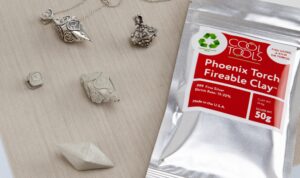
Cyprus Copper Clay
Cyprus copper clay is a base metal clay and requires a kiln and a two-phase firing to sinter. It’s very soft and smooth in the lump clay state, and has an almost silky, elastic quality when rolled into a sheet. It’s substantially less expensive than its silver siblings and provides opportunity for creating bigger pieces or some small-scale sculptures without breaking the bank. Cyprus Copper clay enamels beautifully after being fired; when polished I’m honestly not sure I could tell the difference between enameling on this sintered clay or milled copper sheet. It refines, sands, and carves very readily in the greenware phase, and when fired a great variety of finishes can be achieved with patinas like liver of sulfur.
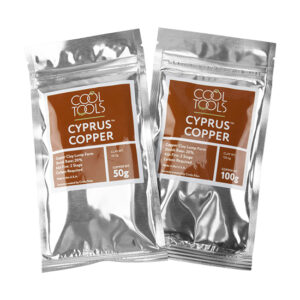
Aureus Bright Bronze Clay
Aureus Bronze clay is very similar to Cyprus Copper Clay in its working qualities, the only difference I have distinguished is the bronze feels slightly less elastic. Aureus can be co-fired with Cyprus Copper Clay, allowing for the opportunity for mixed metal pieces. Aureus Bright Bronze fires to a beautiful antique colored bronze, that also can be darkened to varying levels using patinas. It is very strong after sintering and creates very sturdy pieces. It also sands, carves smoothly, and has a nice long working time.
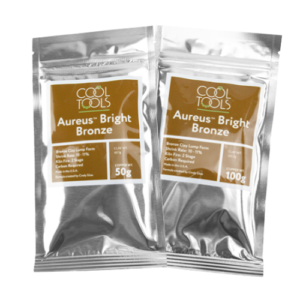
Conclusion
If I may offer a bit of advice for those moving forward, I’d encourage you to explore new clays without the expectations of your previous favorites to see what they have to offer and could contribute to your practice. Sure, you’re probably used to creating in a specific way, and your practice was actually probably shaped by the clay that you are used to working with and its limits and advantages. You may create in a certain way because you are used to working with the qualities of the clays you’re accustomed to using, but if the clays available have changed and are working differently than you are used to, that doesn’t mean they can’t work just as well or even better in some ways, potentially leading to a different way of creating that you may love.
For example, I now capitalize on EZ960’s flexibility to build delicate settings for stones, but this was a result of the clay not having as much strength in greenware when working on tiny things, and me breaking fragile things when I was trying to create them by reductive processes. I ended up loving creating this way, but it wasn’t initially how I instinctively anticipated creating these pieces. I adapted my practice to take advantage of qualities of the clay I was working with, and discovered a harmony in my making that lends to productivity and an enjoyable working experience. There’s a balance to be found between picking the right clay for the job you are hoping to do and realizing the strengths and weaknesses of the clay you have chosen. There may be some growing pains as you learn the differences between the clays currently available and the clays you may be used to working with, but I’m sure with patience and time you’ll find yourself back in your creative flow, loving a new clay.
